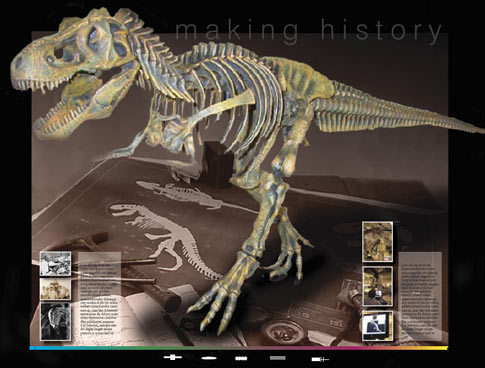
MAGLEV Inc. used 3-D scanning technology to capture the Tyrannosaurus rex (T. rex) fossil skeleton depicted in this poster. Working in the Dinosaur Hall at the Carnegie Museum of Natural History in Pittsburgh, a team of metrology experts scanned every inch and surface of the world’s most famous dinosaur using a pair of networked 3-D scanners that were placed upon six-foot towers and navigated around the perimeter of the historic skeleton in order to collect accurate 3-D point clouds. The result was the most complete digital model of Tyrannosaurus rex to date.
Paleontologists now believe the Tyrannosaurus species carried its tail high in the air, thus Carnegie wishes to not only remount T. rex in this position, but also wants to pose the dinosaur facing a second Tyrannosaurus rex. With an exact computer digital replica, the museum will be able to easily model the 3-D skeleton in different configurations, choose the most appealing positions, and then design the required support. This high precision data can also be used further down the road for scientific analysis of the fossilized bones.
…
Add new comment